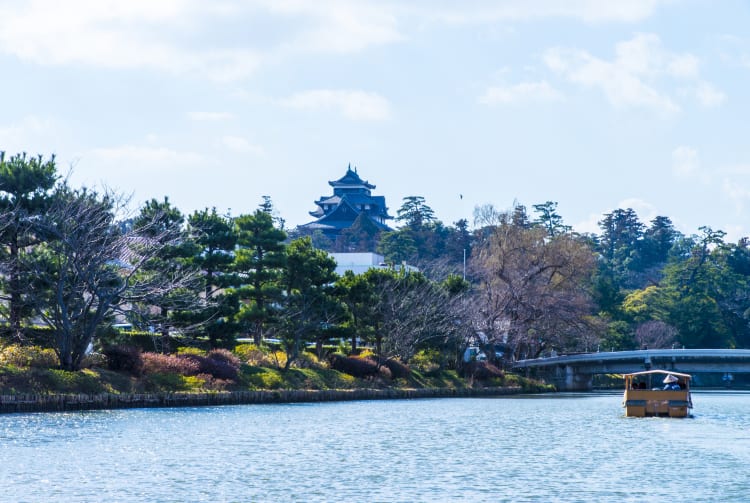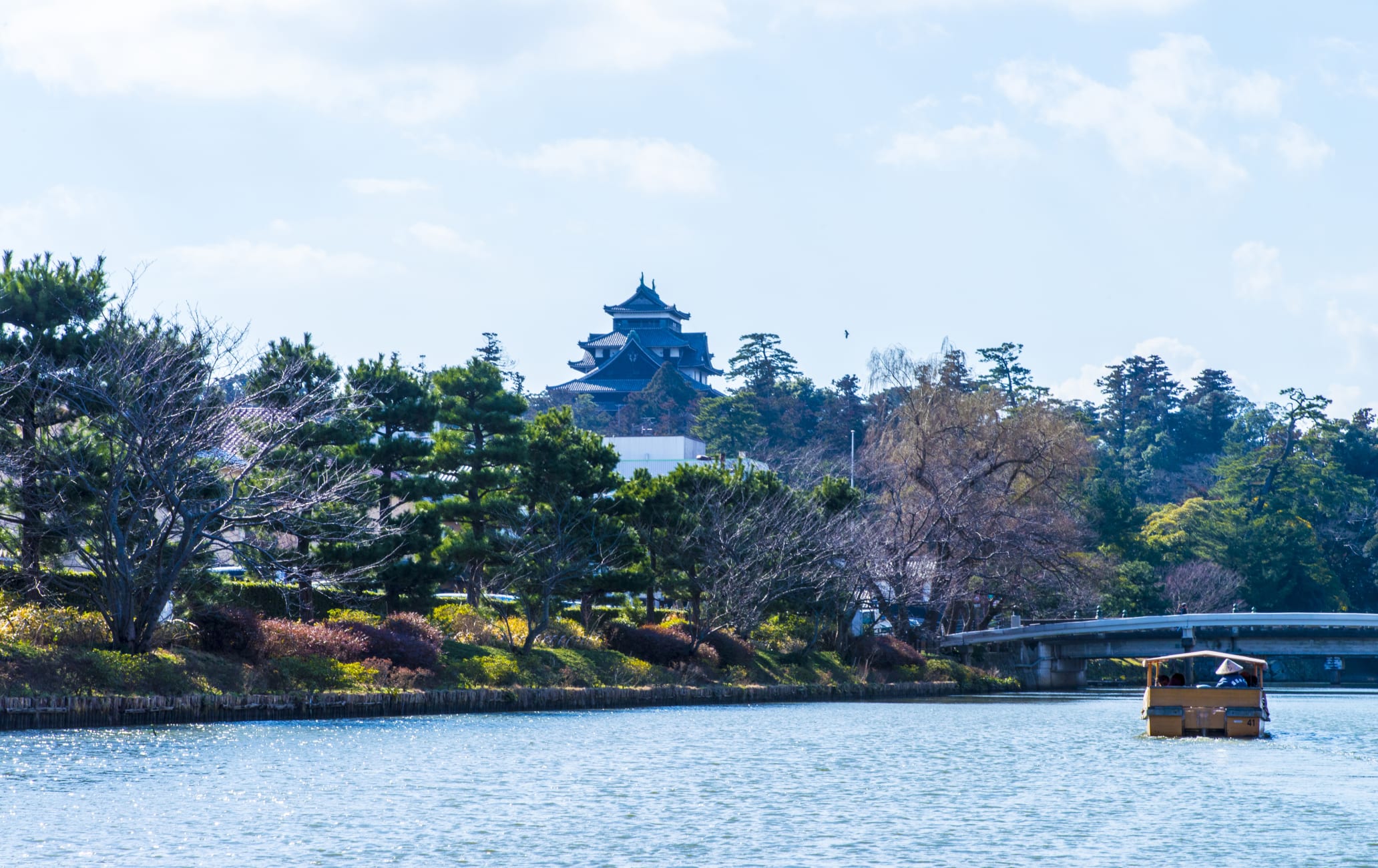A National Treasure that is the region's only intact and original castle
One of only 12 original Japanese castles still in existence, and one of only five classed as a National Treasure, Matsue Castle offers a rare opportunity to explore a magnificent piece of samurai history.
Don't Miss
- A 360-degree view from the top of the castle keep
- Jozan Inari-jinja Shrine, a favorite of writer Lafcadio Hearn
- Scenic Horikawa boat tours
How to Get There
Matsue Castle is easily accessible from Matsue Station, which you can reach by train, bus or plane.
You can ride a bullet train from Tokyo to Okayama, then switch to a JR Yakumo limited express to Matsue Station, which will take a total of around six hours. The Sunrise Izumo night train from Tokyo offers a nice alternative, and there are night buses as well. Multiple flights from Tokyo to nearby airports arrive daily.
The castle is just two kilometers from Matsue Station, and numerous buses pass the castle entrance. The most convenient is the Kurutto Matsue Lakeline Bus, with its one-day pass that enables you to cheaply and easily visit many of this castle town's sights.
Plover Castle
The second largest of the surviving original castles in Japan is also known as the Plover Castle because of its shape and black exterior. Its construction was finished in 1611 after it was decided to move the domain capital to this spot.
The Matsudaira family, direct descendants of the shogun Tokugawa Ieyasu (1543-1616), ruled the castle for most of its history, and the seventh lord, Matsudaira Harusato (known as Lord Fumai), a great exponent of the tea ceremony, was responsible for making Matsue one of the three great centers of the art of tea.



As you explore the different floors of the castle's interior, while walking on dark wooden floors and stairs worn smooth over the centuries, you can view the only existing castle keep with a well inside, built in a unique architecture style. You can see the complex architecture of this wooden fortress's construction up close.
From the top floor you have a 360-degree view over the town that formed around the castle and as far as Lake Shinji.
The Park around the castle
The extensive grounds of the castle is now called Jozan Park, and is free to enter. Many paths go around under the steep stone walls of the castle, the wooded hillsides, and along the moats, making for some quiet pleasant walks. In the spring this is a popular spot for cherry blossom viewing.

There are three shrines within the park, but the one worth seeking out is down a quiet lane to the rear of the castle. Jozan Inari-jinja Shrine was the favorite shrine of writer Lafcadio Hearn, whose home was a stone's throw away across the moat. Explore behind the buildings and discover hundreds of small statues of kitsune, the fox messengers of the deity Inari enshrined here.
A chronicle of a rare event
Jozan Inari-jinja Shrine is the start and endpoint of the Horan-enya Festival, a three-day event involving decorated boats filled with musicians and dancers that is one of the three great boat festivals of Japan. Taking place only every 10 years, the next will be in 2029, but at the nearby Horanenya Museum you can find out all about it and watch videos of this event which fills the city with visitors.
A mansion built for an emperor
Also within the castle grounds is the Kounkaku, a magnificent Western-style mansion built of wood, constructed in 1903 for the Meiji Emperor to stay if he came to Matsue on one of his many tours of the country. He never did come, but his son, the Crown Prince Yoshihito, later the Taisho Emperor, did spend three days here in 1907.
The first floor has exhibitions on Matsue history, and on the second floor the elegant rooms have the original furnishings and décor fit for royalty.
Take a slow cruise to get an unusual perspective
After your visit to the castle, or even before, take a leisurely cruise around the moat and surrounding canals in small boats from which you see the castle from all angles as well as the nearby samurai district of Shiomi Nawate Street .
The boats can be boarded at several spots and a free audio guide will explain the history of the sights you see. The boats have roofs to protect passengers from the rain, and in winter kotatsu heaters and blankets will keep you warm.
Special events of note
From October, the castle is illuminated at night, and throughout the month thousands of paper lanterns line the moat and castle grounds. The Horikawa boats themselves are illuminated, and run special evening cruises during this period.
On the third sunday of October, a unique drum festival starts at the castle. Huge taiko drums with a diameter of about two meters are pulled through the streets and everyone, visitors included, is encouraged to join in

























































